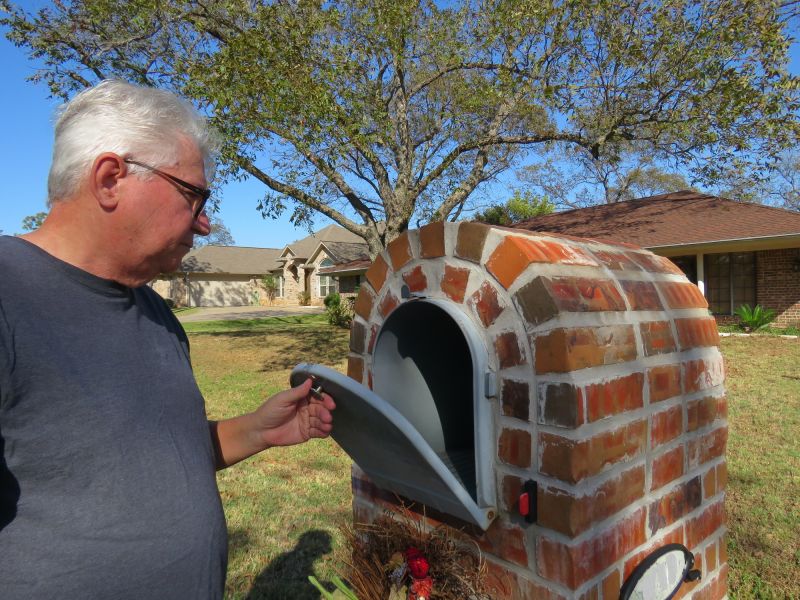Expert Picks For Building Sturdy And Elegant Brick Mailboxes
Find the most reliable materials and accessories recommended by professionals for constructing lasting brick mailboxes.
 Constructing a brick mailbox is a project that combines durability with aesthetic appeal, often serving as a welcoming feature at the entrance of a property. The materials used for supporting and finishing a brick mailbox can vary widely, including different types of mortar, reinforcement materials, and decorative elements. Selecting the right products ensures that the mailbox not only withstands weather conditions but also complements the overall landscape design. When planning for a brick mailbox, it is important to consider the compatibility of construction materials with existing structures and the ease of installation.
Constructing a brick mailbox is a project that combines durability with aesthetic appeal, often serving as a welcoming feature at the entrance of a property. The materials used for supporting and finishing a brick mailbox can vary widely, including different types of mortar, reinforcement materials, and decorative elements. Selecting the right products ensures that the mailbox not only withstands weather conditions but also complements the overall landscape design. When planning for a brick mailbox, it is important to consider the compatibility of construction materials with existing structures and the ease of installation.
Top Overall Option
Mortar Mix for Masonry
A high-quality mortar mix designed for outdoor masonry applications offers excellent adhesion, weather resistance, and ease of use. It provides a solid foundation for brick mailboxes, ensuring stability and durability over time. When selecting a mortar, look for options that are formulated for exterior use and compatible with brick and concrete surfaces.
Types of Products For Brick Mailbox Constructions
Mortar Mixes
Various mortar mixes tailored for outdoor masonry work, offering different setting times and strength levels.
Reinforcing Mesh
Metal or fiberglass mesh used to strengthen the brick structure and prevent cracking.
Brick Ties
Metal ties that secure the brickwork to the supporting structure for added stability.
Concrete Blocks
Precast concrete blocks used as a base or core for brick mailbox construction.
Weather-Resistant Caps
Cap stones designed to protect the top of the brick structure from water damage.
Sealants and Water Repellents
Products applied to the surface of bricks to prevent water infiltration and staining.
Decorative Stone Veneers
Thin stone layers that can be applied to enhance the aesthetic appeal of the brick mailbox.
Mortar Colorants
Pigments used to customize the mortar color for aesthetic matching or accents.
Foundation Anchors
Anchors that secure the mailbox foundation to the ground for stability.
Brick Cutting Tools
Tools needed for precise cutting and shaping of bricks during construction.
Construction Adhesives
Specialized adhesives for bonding bricks and decorative elements securely.
Outdoor Lighting Fixtures
Lighting options to illuminate the mailbox and enhance visibility at night.
Mailbox Number Plates
Durable plates or plaques for displaying house numbers on the brick structure.
Drainage Components
Elements like weep holes and drainage pipes to prevent water accumulation within the structure.
Popular Choices
A commonly used mortar for outdoor brickwork, appreciated for its versatility and weather resistance.
Popular for adding strength to brick structures and reducing cracking.
Widely chosen as a foundational material for brick mailbox bases.
Frequently selected to protect the top of brick mailboxes from water damage.
Commonly used to prolong the appearance and integrity of brick surfaces.
Essential for ensuring the stability of brick veneer structures.
Popular for adding aesthetic variety and texture to brick mailboxes.
Chosen for customizing the look of mortar joints to match or accent the bricks.
Frequently used to secure the structure to the ground, especially in windy areas.
Selected to ensure proper water runoff and prevent structural issues.
A crucial aspect of building a sturdy brick mailbox involves choosing appropriate mortar mixes and reinforcement components. These materials provide the necessary stability and longevity, especially in areas with harsh weather. Additionally, incorporating weather-resistant caps and decorative accents can enhance the visual appeal while protecting the structure from water infiltration. Proper planning and selection of quality products can make the construction process smoother and result in a durable, attractive feature.
In terms of maintenance, selecting materials that are resistant to staining and easy to clean can save time and effort over the years. Some products are designed specifically for outdoor masonry applications, offering better adhesion and weather resistance. When purchasing products for brick mailbox construction, it is also beneficial to consider the compatibility of these materials with the local climate and the overall architectural style of the property. With careful selection, a brick mailbox can serve as a functional and charming focal point for many years to come.
Key Buying Considerations
- Compatibility with existing brick and mortar materials to ensure proper adhesion and aesthetic consistency.
- Weather resistance of the materials used to withstand local climate conditions.
- Ease of installation, especially if undertaking a DIY project, including availability of necessary tools.
- Durability and longevity of the products to minimize maintenance over time.
- Aesthetic options, including colors and textures, to match your landscape design.
- Reinforcement options to prevent cracking and structural issues in the future.
- Waterproofing features like sealants and caps to protect against water infiltration and freeze-thaw cycles.
- Availability of accessories such as lighting, plaques, or decorative elements to personalize the mailbox.
- Cost and value for money, ensuring quality without exceeding budget constraints.
- Compliance with local building codes or HOA regulations regarding mailbox construction.
- Ease of sourcing replacement parts or repair materials if needed in the future.
- Environmental considerations, such as non-toxic or safe-to-handle products, especially in residential areas.
- Brand reputation and reviews to gauge product performance and customer satisfaction.
- Size and weight considerations for the foundation and support structure to ensure stability.
- Potential for customization, including color matching and decorative accents.
